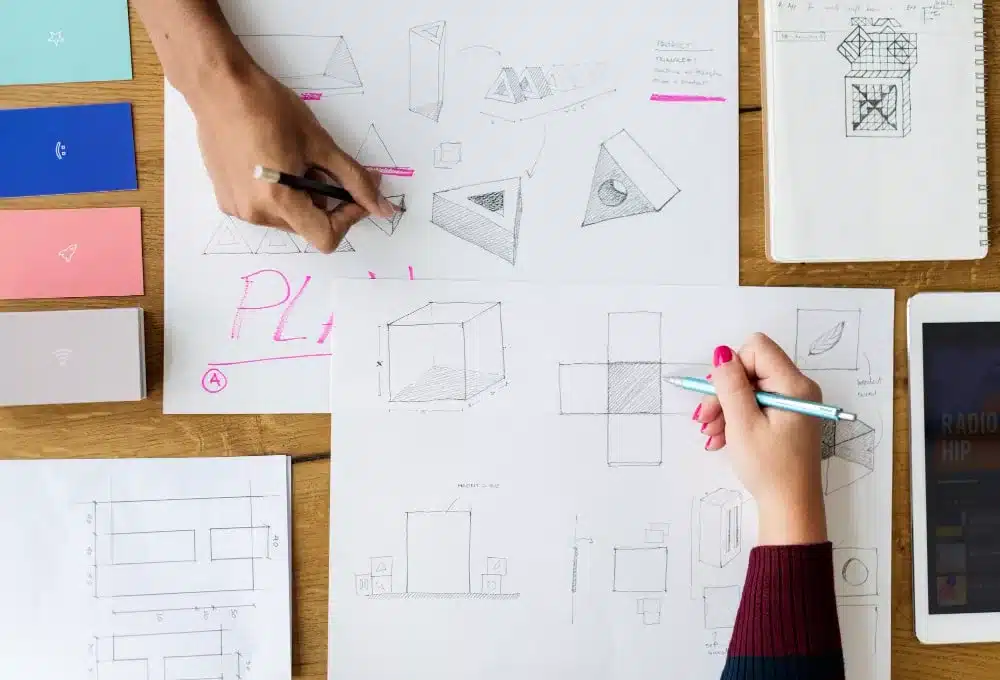Product Design and Development
In the ever-evolving landscape of product design and development, the role of engineering CAD drafting is indispensable. It’s the foundation upon which innovative ideas are transformed into tangible, marketable products. ASTCAD emerges as a beacon in this domain, offering cutting-edge solutions that redefine the way products are conceptualized, designed, and brought to fruition.
Introduction to ASTCAD:
ASTCAD, short for Advanced CAD Technologies, is a pioneering company at the forefront of engineering CAD drafting services. With a team of skilled professionals and state-of-the-art technology, ASTCAD is committed to providing comprehensive product design and development solutions across various industries.
The Importance of Product Design and Development:
In today’s competitive market, product design and development play a crucial role in determining the success of a business. It’s not merely about creating aesthetically pleasing products but also about addressing functional requirements, ergonomic considerations, manufacturability, and market demands. Effective product design and development can significantly impact a company’s bottom line, driving innovation, enhancing user experience, and gaining a competitive edge.
Engineering Design in the Current Context:
As technology advances and consumer preferences evolve, the landscape of engineering design is constantly shifting. From the integration of AI and machine learning algorithms to the growing emphasis on sustainability and environmental consciousness, engineers are facing new challenges and opportunities in product development. ASTCAD recognizes these trends and tailors its services to address the dynamic needs of the industry.
Key Features of ASTCAD’s Services:
- Advanced CAD Software: ASTCAD utilizes the latest CAD software tools, enabling precise modeling, simulation, and analysis of product designs. From 2D sketches to complex 3D models, ASTCAD’s expertise ensures accuracy and efficiency throughout the design process.
- Collaborative Approach: ASTCAD believes in fostering collaboration between designers, engineers, and clients. Through effective communication and feedback loops, ASTCAD ensures that the final product aligns with the client’s vision while meeting technical requirements and industry standards.
- Iterative Design Process: ASTCAD follows an iterative design process, allowing for rapid prototyping and refinement. This approach enables clients to visualize and test various design iterations, accelerating the development cycle and minimizing time to market.
- Comprehensive Support: Beyond CAD drafting, ASTCAD offers a range of supplementary services, including feasibility studies, design optimization, and prototyping assistance. Whether it’s a small-scale project or a large-scale production run, ASTCAD provides end-to-end support to meet client needs.
Case Studies:
- Automotive Industry: ASTCAD collaborated with a leading automotive manufacturer to design a lightweight yet durable chassis for electric vehicles. Through simulation and optimization techniques, ASTCAD developed a robust design that met safety standards while maximizing energy efficiency.
- Consumer Electronics: A startup specializing in wearable technology partnered with ASTCAD to develop a sleek and ergonomic smartwatch. By leveraging CAD modeling and rapid prototyping, ASTCAD helped refine the design to enhance user comfort and aesthetics, leading to positive feedback from early adopters.
Conclusion:
In an era defined by rapid technological advancements and changing consumer preferences, ASTCAD stands as a beacon of innovation in product design and development. By leveraging advanced CAD drafting techniques, collaborative methodologies, and a customer-centric approach, ASTCAD empowers businesses to bring their ideas to life seamlessly. Whether it’s designing the next groundbreaking gadget or optimizing manufacturing processes, ASTCAD remains committed to driving excellence and pushing the boundaries of possibility in engineering design.
What is product design and services?
Product design and services encompass the creation, development, and refinement of tangible products as well as intangible services to meet the needs and desires of customers. Here’s a breakdown:
Product Design: This involves the process of creating a new product or improving an existing one. It typically includes conceptualizing ideas, designing the product’s appearance and functionality, engineering its components, testing prototypes, and finalizing production specifications. Product designers consider aspects such as user experience, ergonomics, aesthetics, materials, manufacturing processes, and cost-effectiveness.
Service Design: Unlike physical products, services are intangible offerings that provide value to customers. Service design focuses on optimizing the customer experience throughout the service delivery process. This includes understanding customer needs and behaviors, designing service processes and interactions, creating service blueprints, and implementing systems to ensure consistent quality and efficiency. Service designers often use techniques such as journey mapping, customer research, and prototyping to develop and improve services.
What is the role of product design and development?
The role of product design and development is multifaceted and critical to the success of a business. Here are some key aspects of their roles:
Identifying Needs and Opportunities: Product design and development teams research market trends, customer needs, and emerging technologies to identify opportunities for new products or improvements to existing ones. They gather insights through market analysis, customer feedback, and competitive research to inform their design decisions.
Conceptualization and Ideation: These teams are responsible for generating creative ideas and concepts for new products or services. They brainstorm, sketch, and prototype different concepts, exploring various possibilities before narrowing down to the most promising ideas.
Designing Solutions: Product designers translate conceptual ideas into tangible designs, considering factors such as user experience, aesthetics, functionality, and manufacturability. They create detailed design specifications and collaborate with engineers and other stakeholders to ensure feasibility and alignment with project goals.
Prototyping and Testing: Prototyping is a crucial step in the product development process, allowing teams to validate design concepts and identify potential issues early on. Product designers create prototypes—ranging from simple sketches to functional models—and conduct usability testing to gather feedback from users and iterate on the design.
Iterative Development: Product design and development is an iterative process, with multiple rounds of refinement based on feedback and testing results. Designers continuously refine and improve the product design, addressing any issues or limitations that arise during development.
